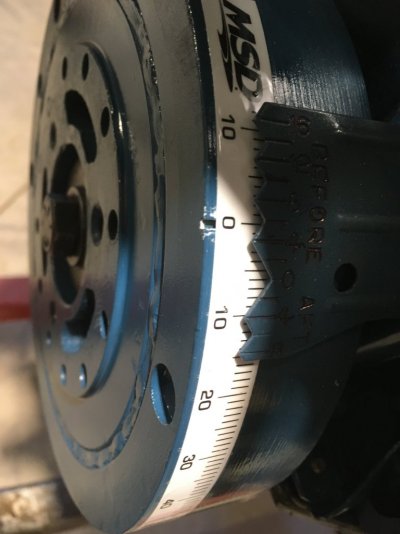OldBlueDually
Full Access Member
- Joined
- Jun 8, 2020
- Posts
- 2,411
- Reaction score
- 8,436
- Location
- Minnesota
- First Name
- Justin
- Truck Year
- 1976 GMC
- Truck Model
- C30
- Engine Size
- 455 Olds
Gent's, after searching this site, then searching the innerweb I am still not coming up with an answer of what to do here. This truck & engine build has been a lot of "new things" I have never done before.
So, I want to know: How do I properly time my engine, with my cam degreed at 1.25 degrees advanced? (When I degreed the cam, the closest I could get is 1.25 advanced).
I have the stock harmonic balancer on the engine, and the stock stamped metal plate with the "0" on it and tic marks to either side of it. Do I try to put it at 0, or....???
The closer to 0 I got with the timing light, the worse the engine ran, so timed it by ear for now.
Thanks for the advice & input guys!
Here is the camshaft information;
So, I want to know: How do I properly time my engine, with my cam degreed at 1.25 degrees advanced? (When I degreed the cam, the closest I could get is 1.25 advanced).
I have the stock harmonic balancer on the engine, and the stock stamped metal plate with the "0" on it and tic marks to either side of it. Do I try to put it at 0, or....???
The closer to 0 I got with the timing light, the worse the engine ran, so timed it by ear for now.
Thanks for the advice & input guys!
Here is the camshaft information;
You must be registered for see images attach


